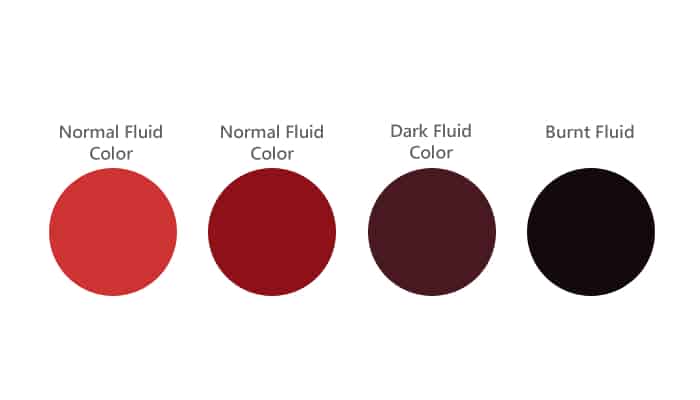Understanding Transmission Fluid for Your Honda Ridgeline
When it comes to maintaining your 2019 Honda Ridgeline, one of the most critical components to keep an eye on is the transmission fluid. This fluid plays a vital role in ensuring your vehicle shifts smoothly and operates efficiently. Let’s break down what you need to know about the transmission fluid type recommended by Honda for your Ridgeline.
Manufacturer’s Recommendations
| Popular posts |
|---|
| What to do to prolong the life of your manual gearbox |
| Automatic transmission: what it is, how it works |
For the 2019 Honda Ridgeline, Honda specifies the use of Honda HCF-2 Automatic Transmission Fluid. This fluid is specially formulated to meet the unique requirements of Honda’s automatic transmissions. Using the correct type of transmission fluid is crucial for optimal performance and longevity of your vehicle’s transmission system.
Why Use Honda HCF-2?
Using the recommended Honda HCF-2 fluid is not just a suggestion; it is essential for several reasons:
- Compatibility: Honda HCF-2 is designed to work seamlessly with the internal components of your Ridgeline’s transmission. It helps prevent wear and tear, ensuring that all parts function as intended.
- Performance: This fluid provides excellent lubrication, which is vital for smooth gear shifts and overall transmission performance. It helps maintain the efficiency of the transmission, especially under heavy loads or during towing.
- Temperature Resistance: Honda HCF-2 is engineered to withstand high temperatures, which is crucial for maintaining performance in various driving conditions. It helps prevent overheating, which can lead to costly repairs.
- Seal Protection: The fluid contains additives that protect seals and gaskets within the transmission, reducing the risk of leaks and prolonging the life of the transmission system.
Specifications of Honda HCF-2
Understanding the specifications of Honda HCF-2 can help you make informed decisions about your vehicle’s maintenance. Here are some key specifications:
- Viscosity: Honda HCF-2 has a viscosity rating that ensures optimal flow and lubrication at various temperatures.
- Friction Characteristics: This fluid is designed to provide the right amount of friction for smooth shifting, reducing slippage and enhancing performance.
- Additive Package: The fluid contains a unique blend of additives that enhance its performance, including anti-wear agents, detergents, and anti-oxidants.
Where to Find Honda HCF-2
You can find Honda HCF-2 at authorized Honda dealerships or reputable auto parts stores. It is essential to purchase from reliable sources to ensure you are getting the genuine product. Avoid generic or off-brand fluids, as they may not meet the stringent requirements set by Honda and could lead to transmission issues down the line.
In summary, using the correct transmission fluid is a non-negotiable aspect of maintaining your 2019 Honda Ridgeline. Stick with Honda HCF-2 to ensure your vehicle runs smoothly and efficiently, keeping you on the road and out of the repair shop.
Recommended Oil Brands for Your Honda Ridgeline Transmission Fluid
When it comes to maintaining the transmission of your 2019 Honda Ridgeline, choosing the right oil brand is just as important as selecting the correct type of fluid. While Honda HCF-2 is the manufacturer-recommended fluid, many owners have shared their experiences with various brands that meet or exceed Honda’s specifications. Here’s a rundown of some popular options based on feedback from forums and owner reviews.
Honda Genuine HCF-2
It’s no surprise that the top recommendation comes straight from Honda itself. The Honda Genuine HCF-2 Automatic Transmission Fluid is specifically formulated for Honda vehicles, including the Ridgeline.
- Pros: Owners report smooth shifting and improved performance when using this fluid. It’s designed to maintain the integrity of the transmission system.
- Cons: The main drawback is the price, as it tends to be more expensive than other brands.
Valvoline MaxLife ATF
Valvoline is a well-known name in the automotive industry, and their MaxLife ATF is often mentioned in owner forums as a reliable alternative to Honda’s OEM fluid.
- Pros: Users appreciate its multi-vehicle compatibility and excellent performance in high-mileage vehicles. Many report smoother shifts and a noticeable reduction in transmission noise.
- Cons: Some users have noted that it may not perform as well in extreme conditions compared to Honda’s OEM fluid.
Mobil 1 Synthetic ATF
Mobil 1 is another trusted brand that has garnered positive feedback from Ridgeline owners. Their Synthetic ATF is designed to provide excellent protection and performance.
- Pros: Owners have praised its high-temperature stability and ability to maintain performance over time. It’s also known for its excellent lubrication properties.
- Cons: A few users have reported that it can be slightly more expensive than other synthetic options.
Castrol Transmax Import Multi-Vehicle ATF
Castrol’s Transmax Import is frequently recommended by Honda Ridgeline owners who are looking for a cost-effective alternative to OEM fluid.
- Pros: Users appreciate its compatibility with various import vehicles and its ability to provide smooth shifting. Many have reported positive experiences with its performance in Honda transmissions.
- Cons: Some users have experienced minor issues with shifting under heavy loads, suggesting it may not be the best option for towing.
Royal Purple Max ATF
Royal Purple is known for its high-performance lubricants, and their Max ATF is no exception. This fluid is often discussed in forums for its superior performance.
- Pros: Users rave about its ability to improve shifting performance and reduce wear on transmission components. It’s also known for its excellent thermal stability.
- Cons: The price point is higher than many other brands, which may deter some owners.
Amsoil Signature Series Synthetic ATF
Amsoil has a strong following among automotive enthusiasts, and their Signature Series Synthetic ATF is often recommended for those who want top-tier performance.
- Pros: Owners report exceptional performance, especially in extreme conditions. It provides excellent protection and longevity, making it a favorite among those who prioritize maintenance.
- Cons: The cost is on the higher side, which may not appeal to budget-conscious owners.
Owner Feedback and Experiences
In various online forums, Honda Ridgeline owners frequently share their experiences with these brands. Many emphasize the importance of sticking to fluids that meet Honda’s specifications, as using subpar products can lead to transmission issues down the line.
- Many owners recommend sticking with Honda Genuine HCF-2 for peace of mind, especially for those who have recently purchased their vehicle or are still under warranty.
- Others who have switched to brands like Valvoline or Mobil 1 report that they have not experienced any significant issues and appreciate the cost savings.
- Some users suggest that if you are considering a switch from OEM fluid, it’s best to do so after a complete transmission flush to avoid mixing fluids.
In summary, while Honda Genuine HCF-2 remains the gold standard for your Ridgeline, several other brands have proven themselves reliable based on owner feedback. Always consider your driving conditions and maintenance habits when selecting a transmission fluid brand.
Change Interval for Your Honda Ridgeline Transmission Fluid
Maintaining the right change interval for your transmission fluid is crucial for the longevity and performance of your 2019 Honda Ridgeline. The general recommendation for automatic transmission fluid changes is typically between 30,000 to 60,000 miles (approximately 48,000 to 96,000 kilometers ). However, this can vary based on driving conditions and habits.
Manufacturer Recommendations
Honda recommends checking your transmission fluid at regular intervals and changing it according to the maintenance schedule outlined in the owner’s manual. While the manual may not specify exact mileage for fluid changes, it is essential to follow the guidelines for severe driving conditions, which can include:
- Towing heavy loads
- Frequent stop-and-go driving
- Driving in extreme temperatures
For these conditions, more frequent changes may be necessary to ensure optimal transmission performance.
Partial Transmission Oil Changes
In many cases, a full transmission fluid change requires the removal of the transmission pan, which can be a labor-intensive process. As a result, many vehicle owners opt for partial transmission oil changes, which can be performed more easily and frequently.
What is a Partial Transmission Oil Change?
A partial transmission oil change involves draining a portion of the old fluid and replacing it with new fluid. This method is often easier and less expensive than a complete fluid change. Here’s how it typically works:
- Drain the Fluid: A technician will drain a portion of the transmission fluid, usually around 4 to 6 quarts, depending on the vehicle.
- Replace with New Fluid: The technician will then refill the transmission with fresh fluid, ensuring that the new fluid mixes with the remaining old fluid.
Benefits of Partial Changes
Partial changes can provide several benefits:
- Cost-Effective: Since it requires less labor and time, partial changes are generally less expensive than full fluid changes.
- Frequent Maintenance: Owners can perform partial changes more regularly, which can help maintain fluid quality and transmission health.
- Less Downtime: A partial change can be completed quickly, allowing you to get back on the road without the extended downtime associated with a full fluid change.
Statistical Data and Authoritative Sources
According to the Automatic Transmission Rebuilders Association (ATRA), regular maintenance, including fluid changes, can significantly extend the life of your transmission. They recommend that vehicle owners adhere to a maintenance schedule that includes fluid changes every 30,000 to 60,000 miles, especially for those who drive under severe conditions.
Additionally, a study published in the Journal of Automotive Engineering highlighted that maintaining clean transmission fluid can reduce the risk of transmission failure by up to 50%. This statistic underscores the importance of not only changing the fluid but also considering the frequency of those changes.
In summary, while the recommended change interval for your Honda Ridgeline’s transmission fluid is generally between 30,000 to 60,000 miles, opting for partial changes can be a practical approach to maintaining your vehicle’s transmission health. Regular maintenance, whether through full or partial changes, is essential for ensuring your Ridgeline runs smoothly and efficiently.
What Color Should Transmission Fluid Be?


